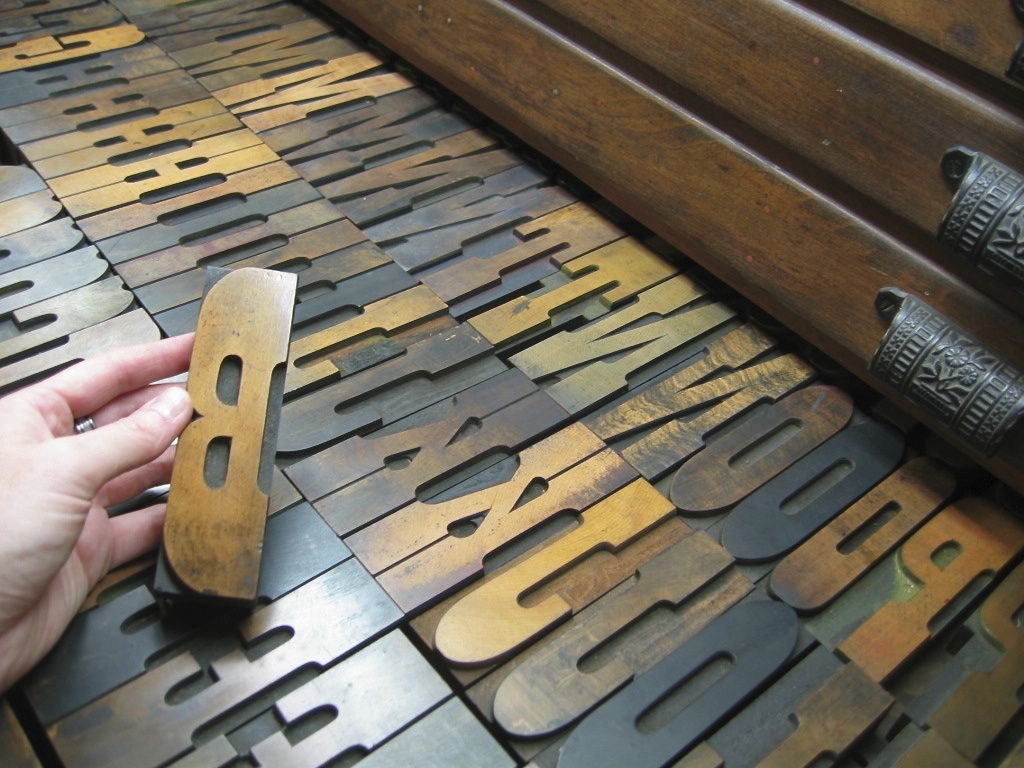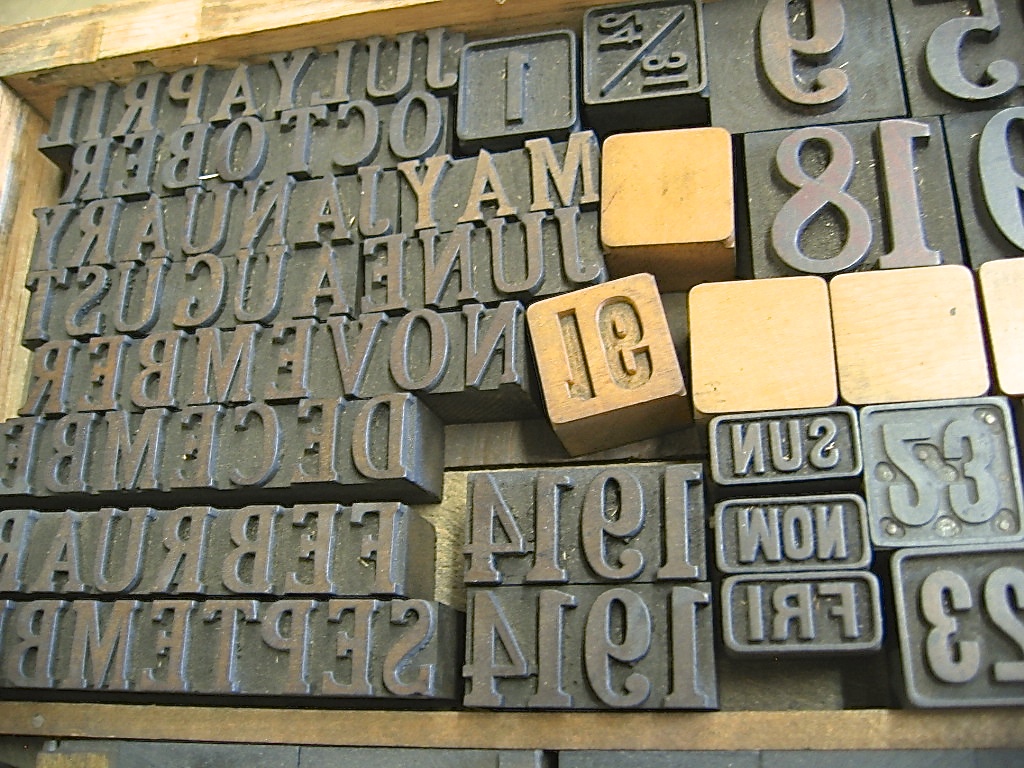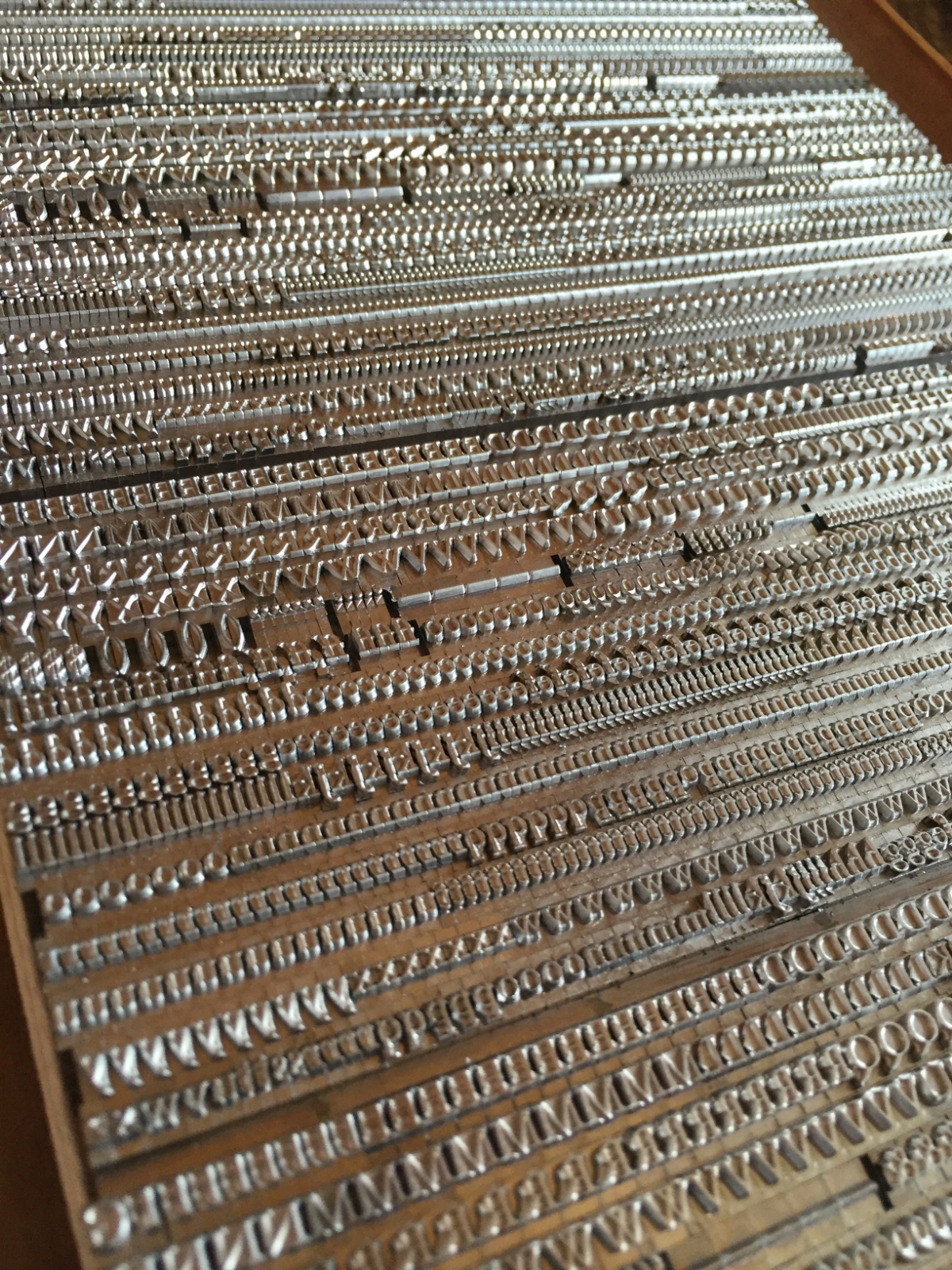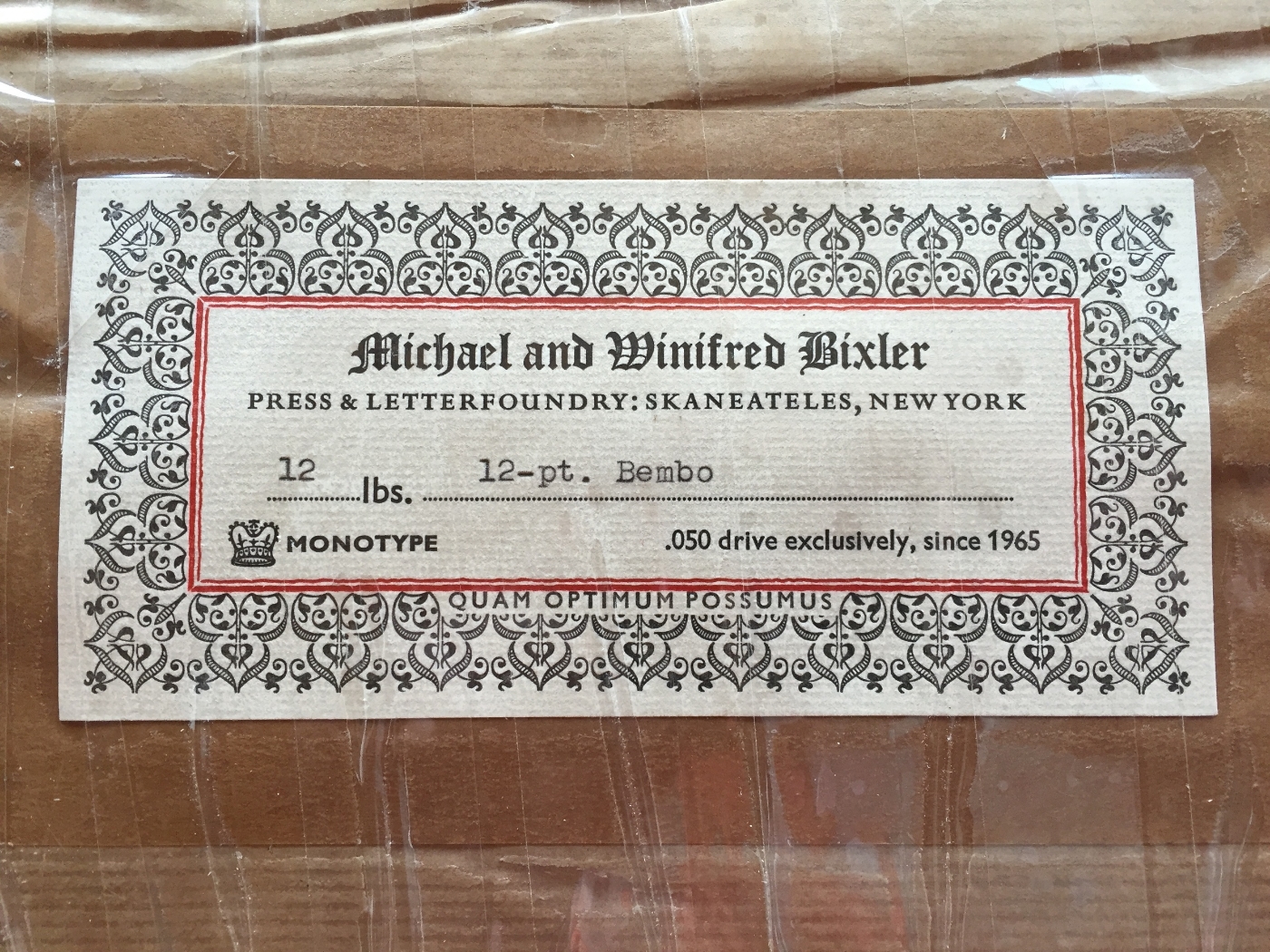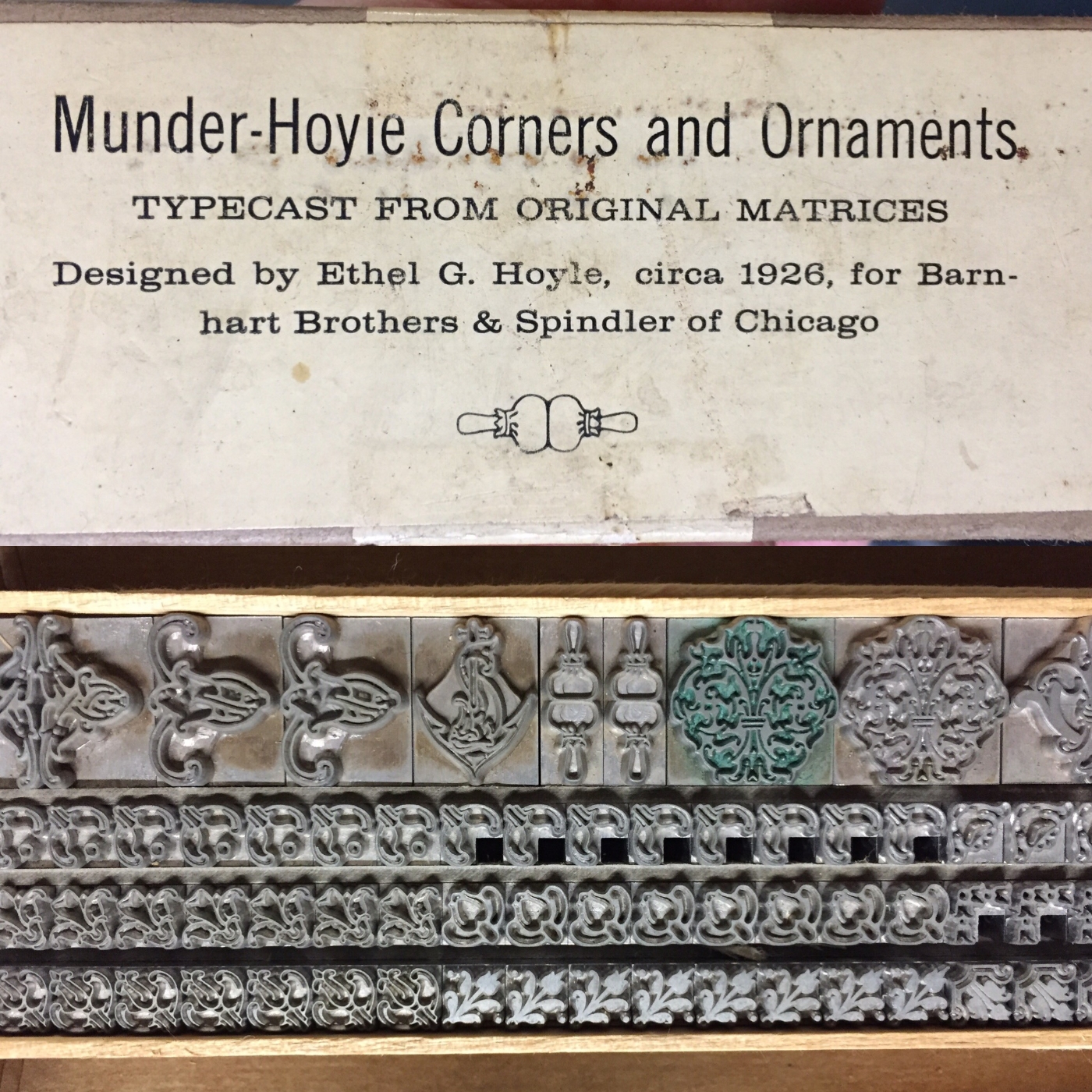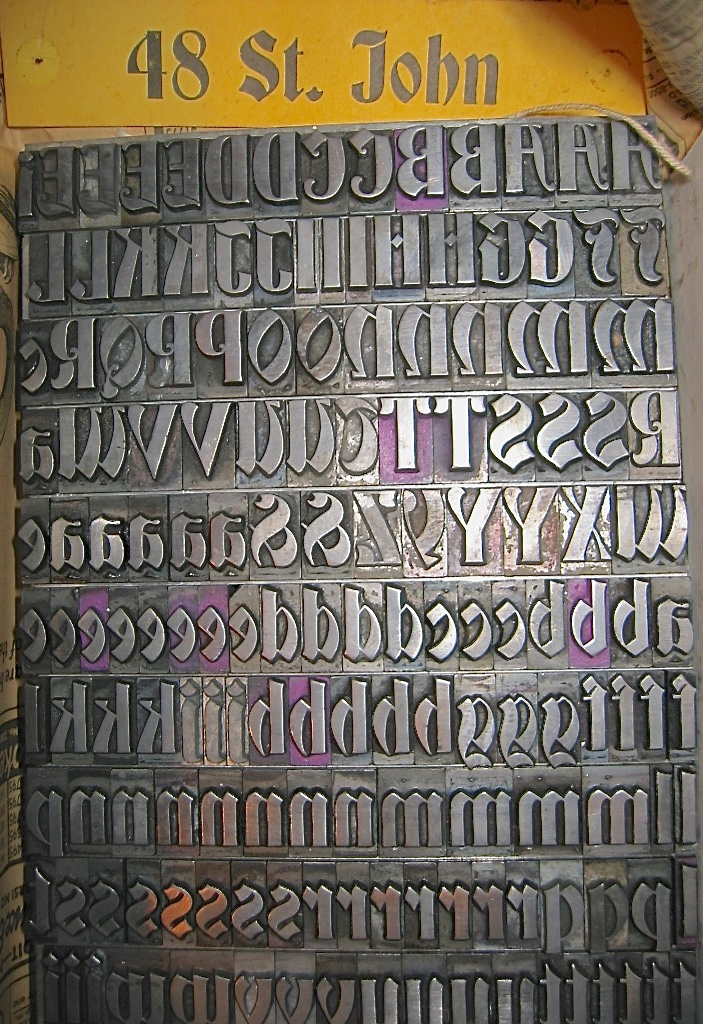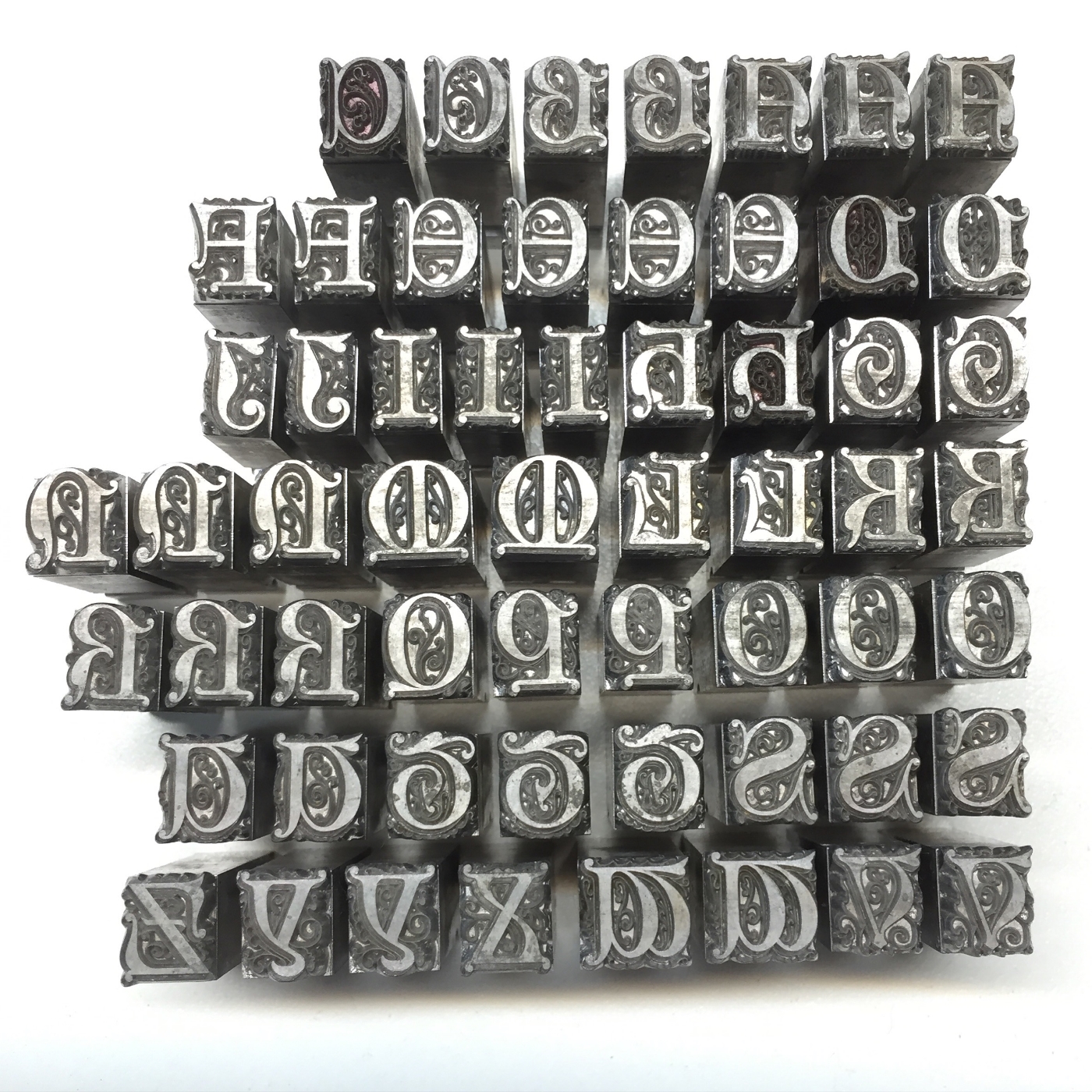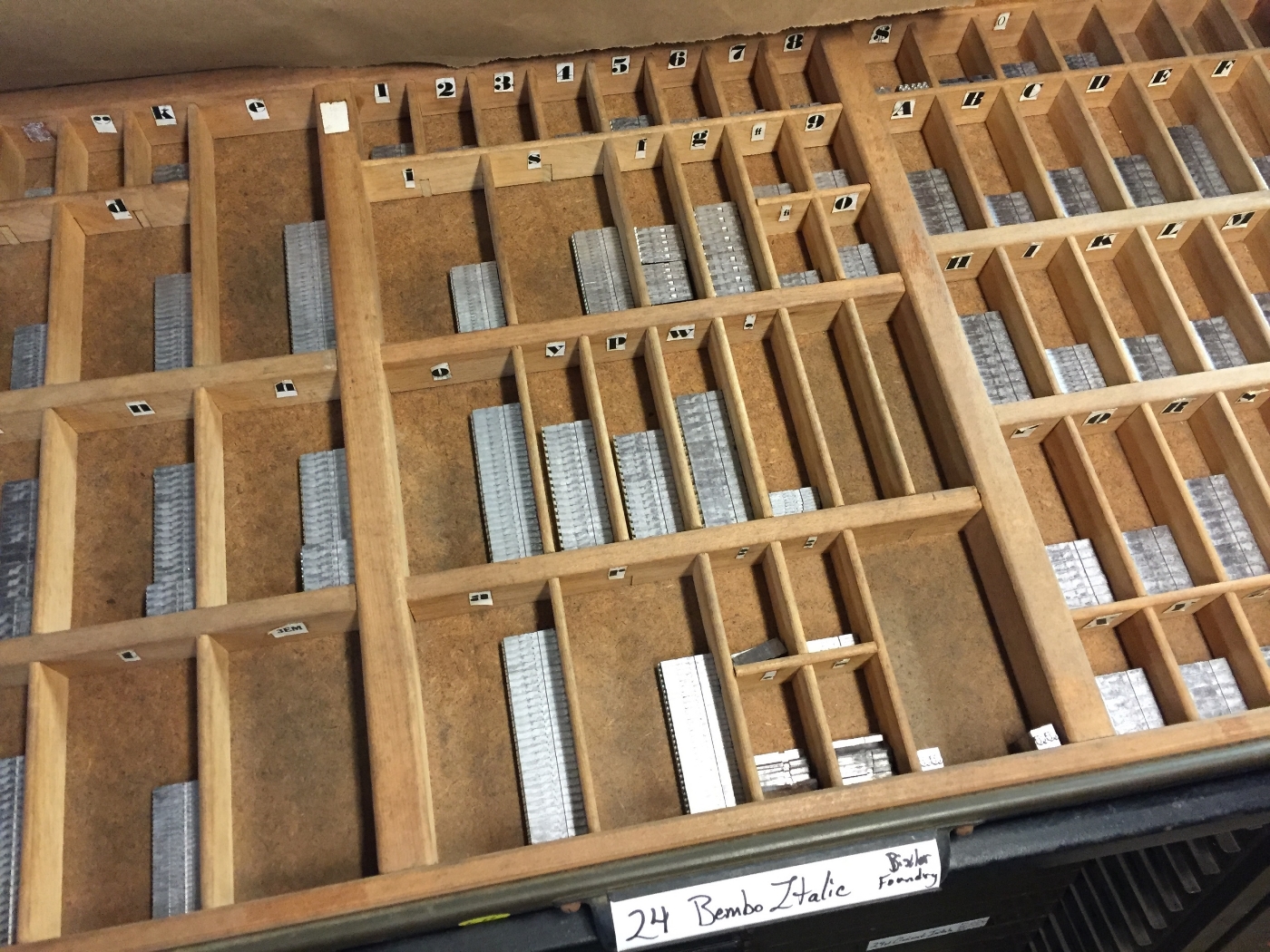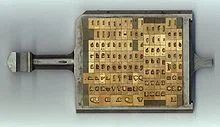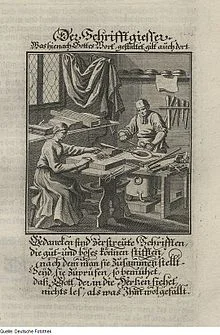Today's Words Are:
PIED ~ Pronounced with a long “i”, as in "cherry pie." The term for metal type that has become all jumbled up, disarranged, mixed up.
HELL BOX ~ The box or bucket into which is thrown metal type that is too worn or damaged to print well.
PRINTER'S DEVIL ~ An old term for the young assistant in a printing shop who was given menial tasks or errands, such as sweeping floors or sorting type.
I had a completely different set of interesting words from the printing trade ready to share with you all. And then this happened:
Pied type on the floor at St Brigid Press.
I allowed myself to get in a hurry recently, while looking for a particular dash in the back of a typecase. I pulled the case out too far, without pulling the case below it out slightly (a safety measure, to prevent what happened from happening), and CRASH — a small tsunami of metal letters fell to the floor. The concrete floor. ARGH. There they stayed for a few days, until I could face the mess again and gently scoop up the pied type.
A 12pt letter "m" from the pile of pied type. It is, unfortunately, damaged and bound for the hell box.
Much of the type is salvageable, thank goodness. But there are still many letters, numbers, and punctuation pieces that were damaged. Type metal is soft enough to scratch or dent easily if dropped. Those pieces that are too damaged to print correctly will be weeded out and relegated to the hell box. When the box is full, a type foundry can melt down the metal and cast new letters with it.
The St Brigid Press hell box, into which we pitch metal letters that are broken, scratched, dented, or otherwise rendered unprintable. Grateful acknowledgement goes to the Shop Dog, Mira, for generously donating an empty biscuit tub for the task.
Obviously, sorting pied type is a time-consuming job. One that is at once drudgery and exacting — each letter must be inspected to see if its face is dented or scratched, or if it survived the ordeal unscathed. Since we are in the full swing of book production here at the Press, we decided to call upon our own printer’s devil, Julia Grammer, to help out. Julia is a student of typography and graphic design at an area college. Not only is she knowledgable about type, but she brings the kind of care, curiosity, and intelligent attention that are guiding principles at the Press. Here’s a case of type after Julia was let loose on it:
Ahhhh.... Order, wrought from chaos, thanks to the Press printer's devil, Julia Grammer.
Thanks, as always, for joining us on this journey, Friends!
All best to all,
The Pied Typer of Afton







